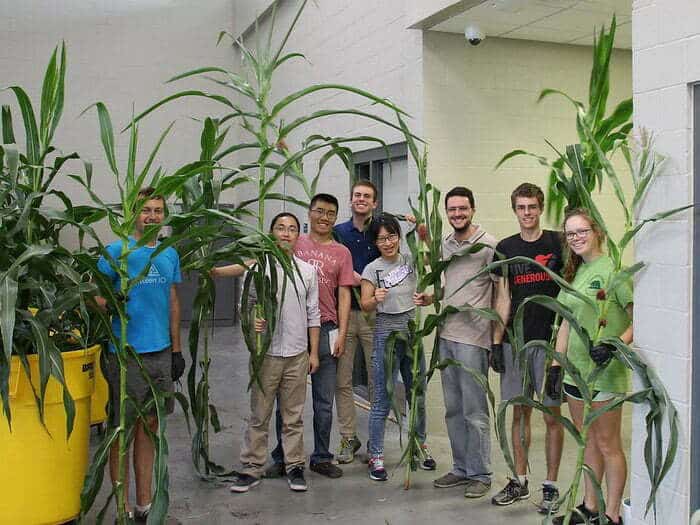Investing in Breeding Programs and Research with Genomes to Fields
Variation in genotype, environment and management practices all interact in a way that affects crop yield, profitability and environmental impact – and Nebraska is participating in the multistate, multiyear Genomes to Fields (G2F) initiative to better predict how these variables affect overall crop performance and ultimately influence seed selection.
This type of research project is an investment that will pay dividends over a long period of time. Eventually, this research, funded in part by the Nebraska Corn Board, can be incorporated in breeding programs to accelerate the development of higher yielding varieties with greater resource use efficiency – and guide the selection of the correct hybrids for the correct environments. Key genetic improvements include those made to:
- Plant morphology – plant height
- Ear morphology – ear length
- Agronomic stand count – number of plants per acre or other specific area
- Productivity test weight – density measured in pounds per bushel
G2F – A Project in Progress
Just as fertilizer application can be customized based on geography – as well as temperature and moisture gradients – so can the actual corn plant. Genomes that respond well under well-watered, well-fertilized conditions typically do not thrive in water- or nutrient-constrained conditions. Similarly, varieties that produce greater yields under input-constrained conditions typically do not perform well under “ideal growing conditions.”
The Genomes to Fields initiative studies how genetic variation within the corn genome can influence different traits under varying growing conditions. The initiative’s Big-Picture Goal is to tailor the corn genome over time to create seed hybrids matching a wide variety of growing conditions more precisely. That means crop production will become more efficient, requiring fewer inputs such as water and fertilizer. In other words, we’re talking about outcomes that are both profitable and eco-friendly!
The G2F initiative is not specific to Nebraska. In fact, Nebraska is one of 22 states contributing to this project’s data compilation over a span of several years. Once the project is complete, this data can be utilized by all 22 states as they make adjustments to the genome that are appropriate for their growing conditions.


